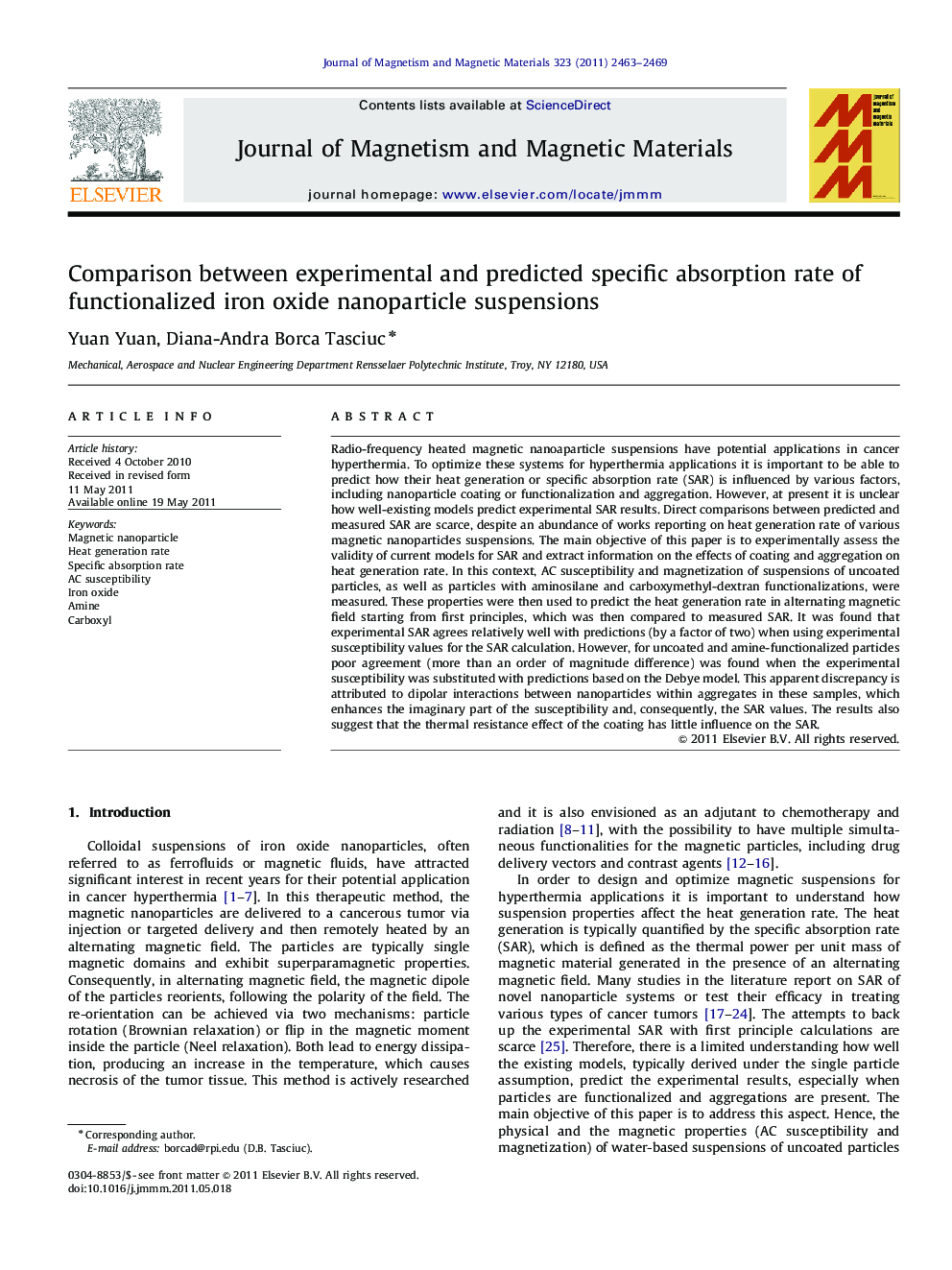| کد مقاله | کد نشریه | سال انتشار | مقاله انگلیسی | نسخه تمام متن |
|---|---|---|---|---|
| 1800425 | 1024528 | 2011 | 7 صفحه PDF | دانلود رایگان |

Radio-frequency heated magnetic nanoaparticle suspensions have potential applications in cancer hyperthermia. To optimize these systems for hyperthermia applications it is important to be able to predict how their heat generation or specific absorption rate (SAR) is influenced by various factors, including nanoparticle coating or functionalization and aggregation. However, at present it is unclear how well-existing models predict experimental SAR results. Direct comparisons between predicted and measured SAR are scarce, despite an abundance of works reporting on heat generation rate of various magnetic nanoparticles suspensions. The main objective of this paper is to experimentally assess the validity of current models for SAR and extract information on the effects of coating and aggregation on heat generation rate. In this context, AC susceptibility and magnetization of suspensions of uncoated particles, as well as particles with aminosilane and carboxymethyl-dextran functionalizations, were measured. These properties were then used to predict the heat generation rate in alternating magnetic field starting from first principles, which was then compared to measured SAR. It was found that experimental SAR agrees relatively well with predictions (by a factor of two) when using experimental susceptibility values for the SAR calculation. However, for uncoated and amine-functionalized particles poor agreement (more than an order of magnitude difference) was found when the experimental susceptibility was substituted with predictions based on the Debye model. This apparent discrepancy is attributed to dipolar interactions between nanoparticles within aggregates in these samples, which enhances the imaginary part of the susceptibility and, consequently, the SAR values. The results also suggest that the thermal resistance effect of the coating has little influence on the SAR.
► Thermal resistance of nanoparticle coating has little impact on heat dissipation.
► Debye model for single particle assumptions underestimates AC susceptibility.
► Coating affects the clustering, susceptibility and heat dissipation.
Journal: Journal of Magnetism and Magnetic Materials - Volume 323, Issue 20, October 2011, Pages 2463–2469